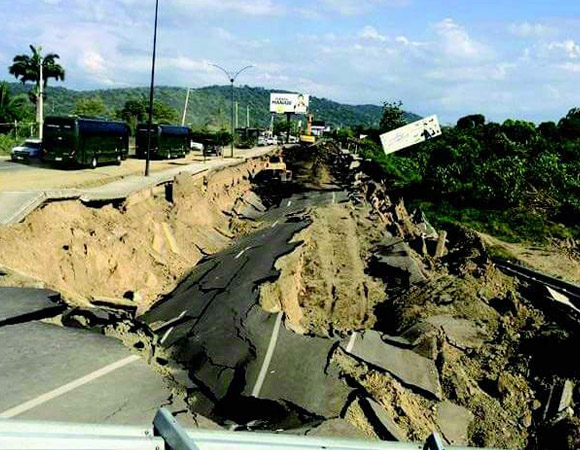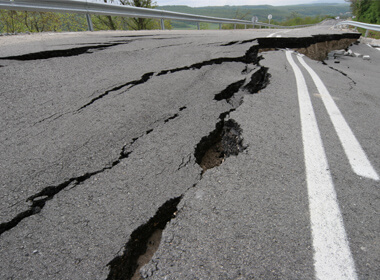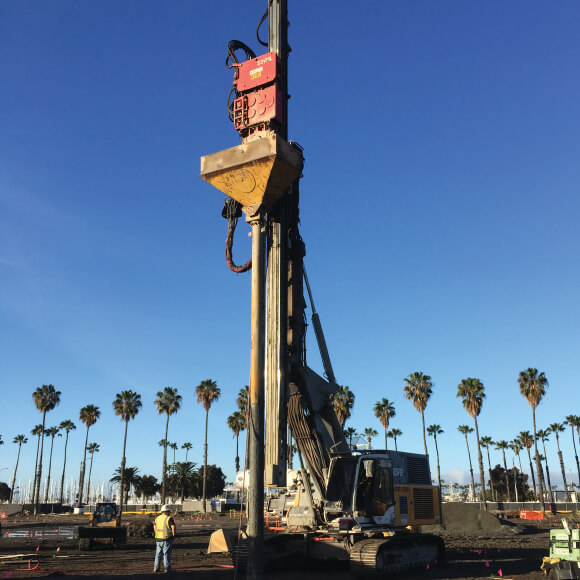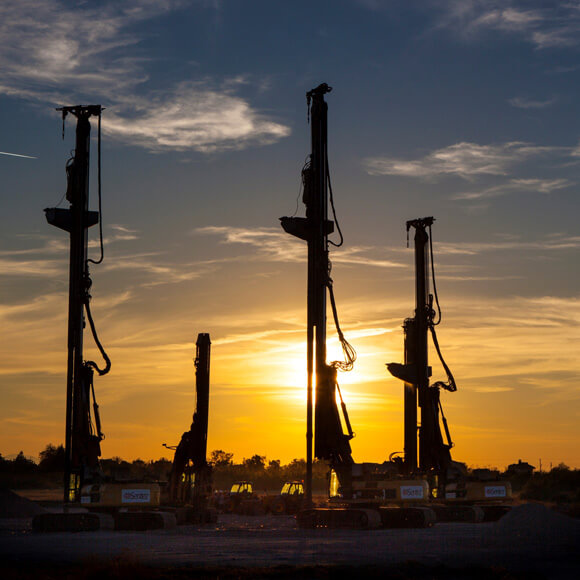
What Is Soil Liquefaction?
Soil liquefaction is a serious concern in geotechnical engineering, particularly in seismic-prone regions. It occurs when saturated, loose granular soils lose strength during dynamic loading events—causing the ground to behave like a liquid. This phenomenon can result in devastating effects and widespread damage to infrastructure, including foundation failure, tilting, lateral spreading, and settlement.
Because the consequences of soil liquefaction can often be severe, mitigating these hazards must be part of any responsible site design or redevelopment plan. Geopier is a leader in advanced ground improvement techniques—offering proven solutions to mitigate liquefaction risks efficiently and economically

Liquefaction Vulnerability
Liquefaction is most likely to occur when loose, cohesionless soils such as clean to silty sand that are saturated due to high groundwater table are subjected to seismic shaking or repetitive vibratory loading.
Vulnerable regions within North America include much of the West Coast, Pacific Northwest, Gulf Coast, and Mississippi River basin, though risks exist across the country.
Nearly any structure, embankment, roadway, or infrastructure can be negatively affected by ground soil liquefaction.

Negative Liquefaction Effects & Consequences
- Structural damage or complete collapse
- Ground deformation and lateral spreading
- Excessive settlement
- Slope failure
- Lengthy downtime for businesses and infrastructure
- High repair and remediation costs
- Public safety hazards

Why Liquefaction Mitigation Matters
- Reduces long-term liability and construction risk
- Enhances performance under seismic loading
- Improves constructability in challenging soils
- Can lead to faster approvals and reduced design conservatism

Why Choose Geopier for Soil Liquefaction Mitigation?
For more than 25 years, Geopier has helped engineers and developers solve complex soil challenges through innovative, rigorously tested liquefaction mitigation techniques.
The Geopier Advantage:
- Tailored Engineering: Broadest range of solutions that are customized to site-specific soil data and performance goals
- Value-Focused Solutions: Reduce over-excavation, minimize concrete use, and speed construction schedules while enhancing performance
- Deep Industry Experience: Over 10,000 successful projects across commercial, transportation, and industrial markets
- Innovation-Driven: Since we invented Intermediate Foundation solutions in 1989, we have continued to develop new and better solutions, and backed up our claims through our investments in research with top institutions.
How to Mitigate Liquefaction
Addressing liquefaction vulnerability is not only a best practice—it’s a safeguard against future loss and liability. Proactive liquefaction prevention is significantly more cost-effective than dealing with failure and remediation after the fact.
Geopier Ground Improvement Systems for Liquefaction Mitigation:
Rammed Aggregate Pier® Systems
- Densify and reinforce loose granular soils
- Improve bearing capacity and control settlement Reduce potential for pore pressure buildup, which triggers liquefaction during seismic events
Rigid Inclusions
- Transfer structural loads through liquefiable zones to competent bearing strata
- Minimize settlement and improve seismic performance
Grouted Impact® and GeoConcrete® Columns
- Create high-stiffness vertical elements for deep liquefaction mitigation
- Provide resistance to lateral spreading and cyclic degradation
- Commonly used in seismic retrofits and critical facilities



Take the Next Step Toward Safer, Stronger Ground
If your site is located in a seismically active or groundwater-saturated area, a soil liquefaction evaluation is essential. If your site is liquefiable, Geopier systems can reduce risk and improve project performance. Contact us today to schedule a consultation with your local Geopier engineer or learn more about solutions tailored to your site conditions.
